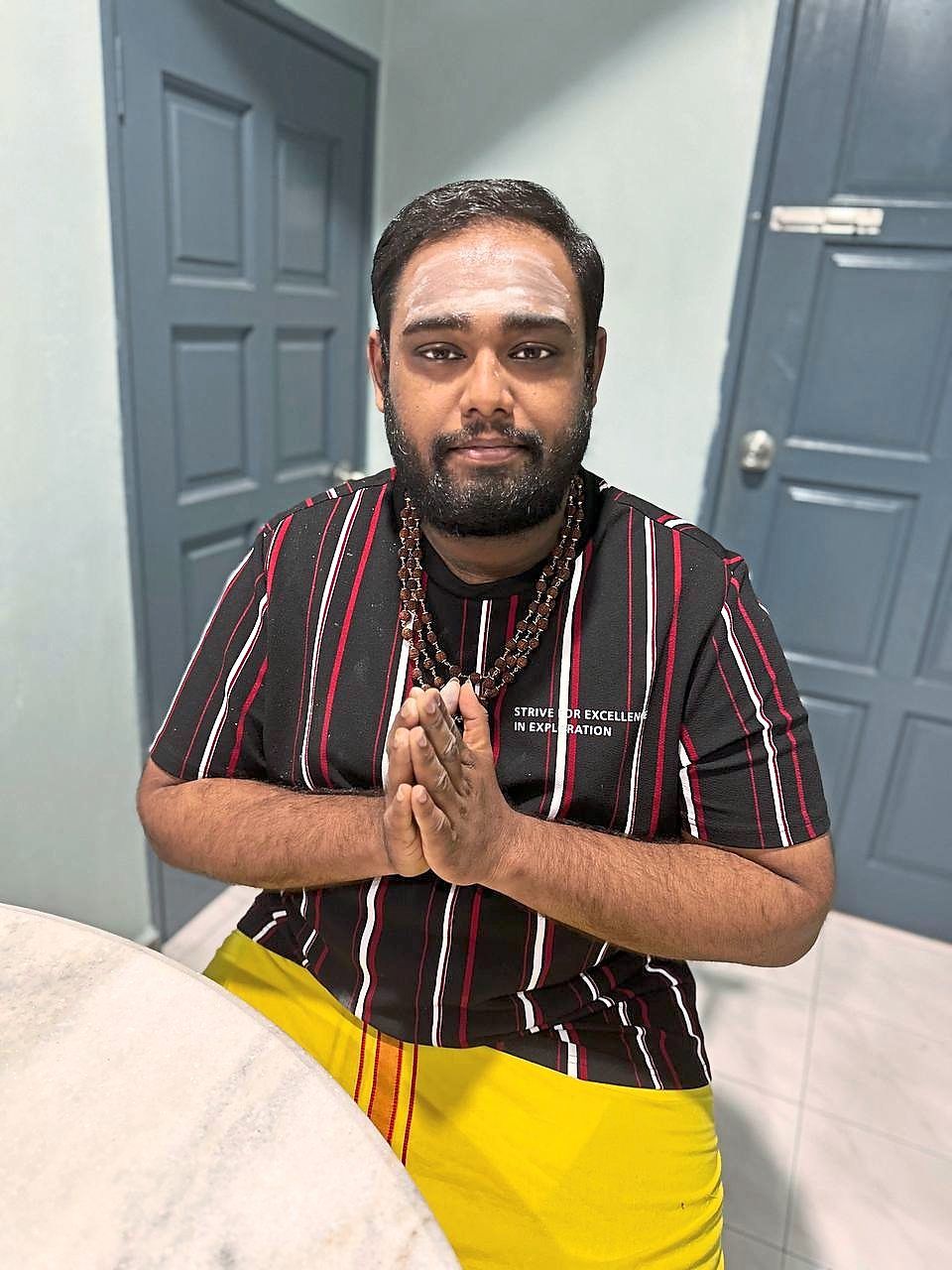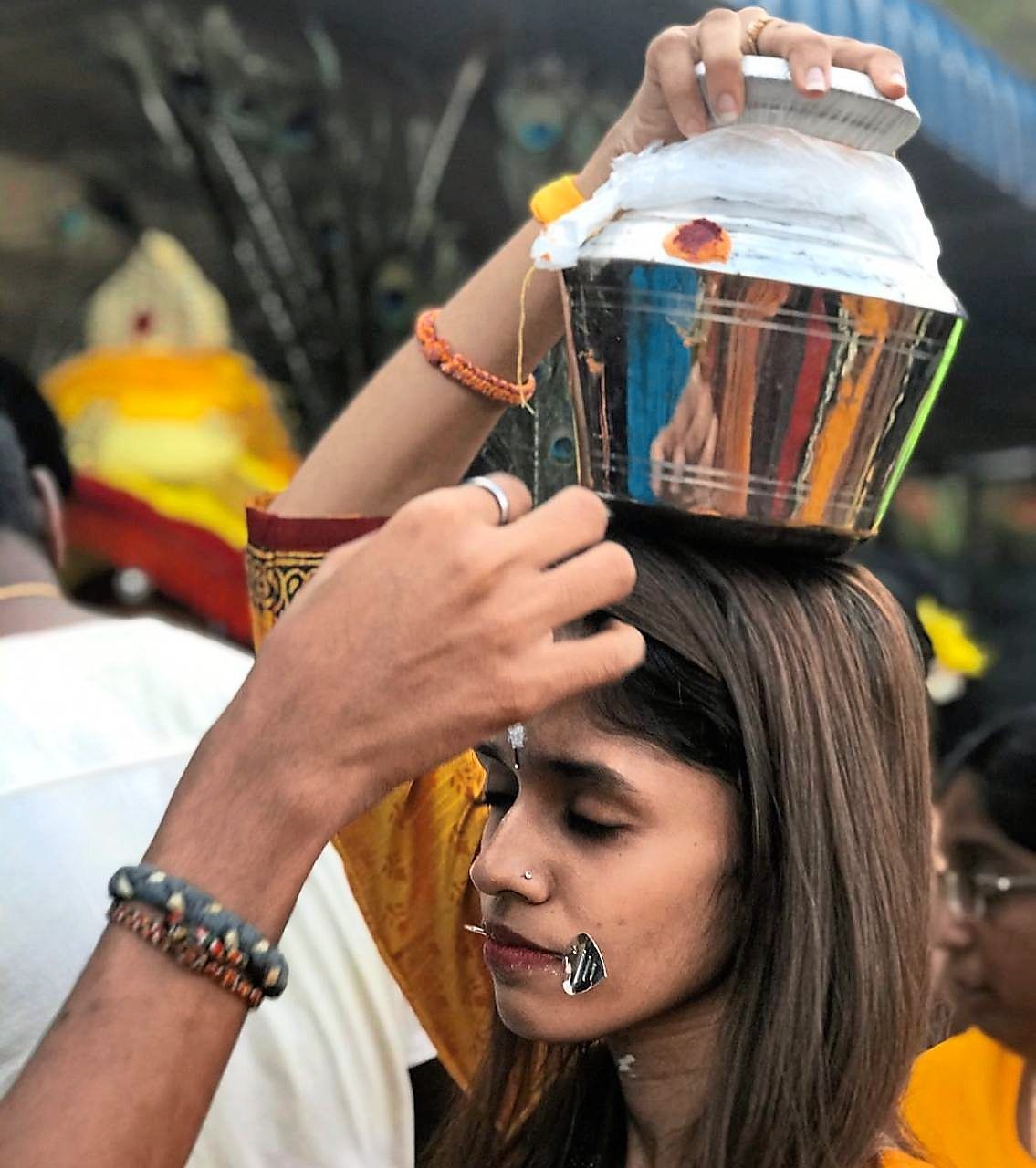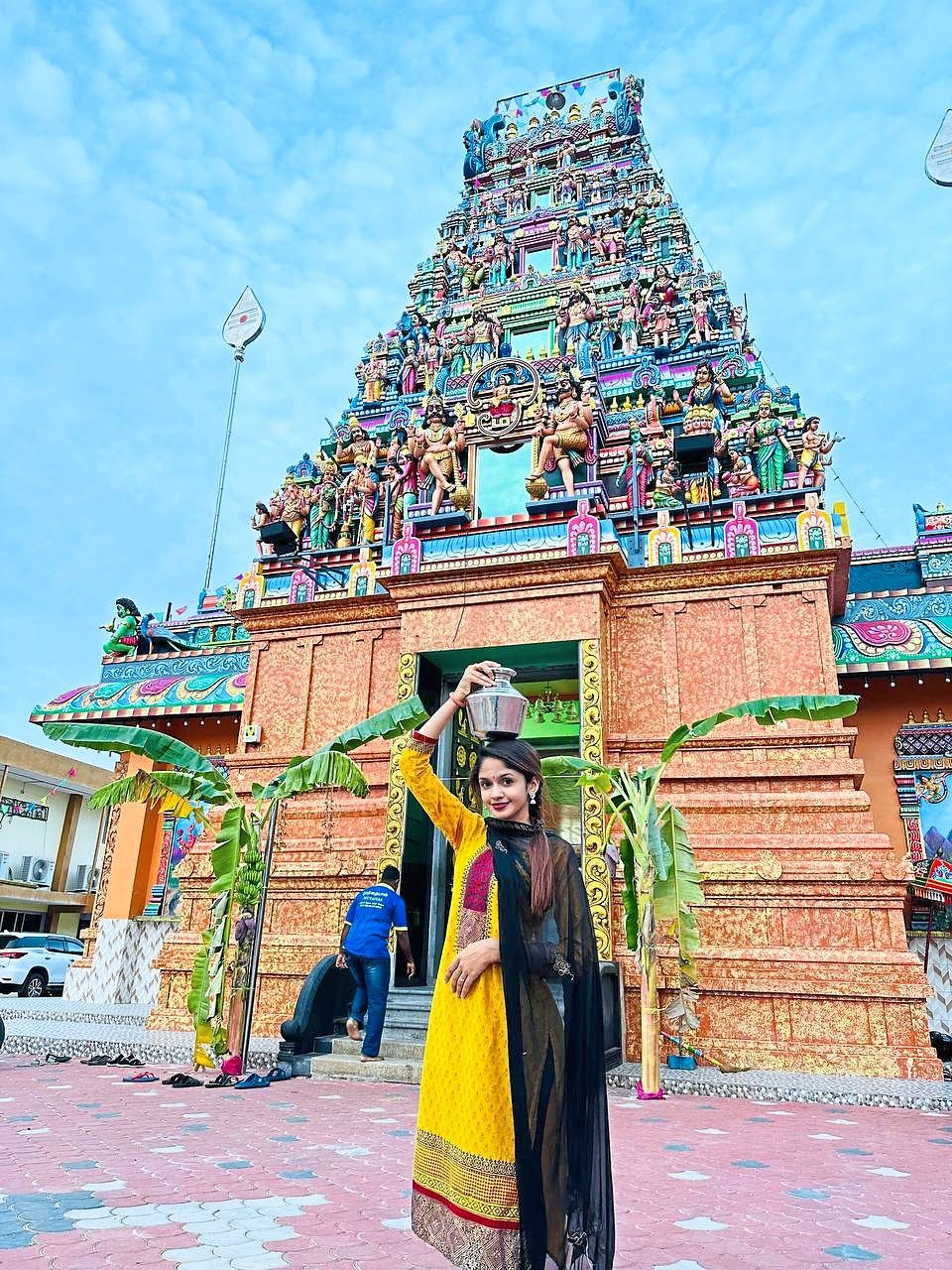After two years, devotees of Lord Muruga can carry kavadi again at Hindu temples nationwide during Thaipusam. — Photos: SS KANESAN and ART CHEN/ The Star
THE kavadi is an integral part of the Thaipusam festival and it will be making a welcome return after two years.
Use of kavadi was restricted among other activities as a crowd control measure to prevent the spread of Covid-19 during the pandemic.
As the celebration this year is set to resemble the ones held during pre-pandemic times, kavadi bearers are excited about being able to resume their annual ritual again for Thaipusam which falls on Feb 5, tomorrow.
Kavadi is an offering carried over the shoulder, symbolising a burden which is offered ceremonially.
On Thaipusam Day, devotees carry kavadi ranging from a pot of milk to elaborately decorated structures for various reasons, such as to fulfil a vow, to seek blessings or ask for forgiveness.
Among those who will be resuming their usual practice of carrying a kavadi is financial consultant Sivaraja Kaliyaperumal, 53, from Kuala Langat, Selangor.
He has been doing so in Batu Caves, Gombak, Selangor, almost every year.
Sivaraja started making his own kavadi since the first time he carried one at the age of 26.
“I learnt from watching the elders make it while growing up.
“Now, I not only make a kavadi for myself, I also do simple ones to rent out,” he said.
Interest in renting kavadi has been very high this year, he said.
Kavadi bearers who make it themselves take much pride in their work.
They would come up with new designs and ideas to decorate their kavadi.
This year, Sivaraja is making a tall kavadi measuring about 10ft (3.05m).
He said very few people would carry tall kavadi in Batu Caves, as it would be physically challenging due to the presence of overhead cables and wires.
When coming across arches, the kavadi bearer has to bend down to make it through, which is not easy.
“I have carried a tall kavadi before so I know how to manoeuvre it,” he said.
Sivaraja noted that the price of materials needed to make the kavadi, namely peacock feathers, plywood, aluminium plates and stainless steel bars had increased.
“For instance, the cheapest peacock feather I could get was sold for RM1.40 when bought in bulk.
“I could get it for less than RM1 in the past and I need 3,500 pieces for one tall kavadi.
“As I need to find a way to be able to cut costs in the future, I source for a rubber-based material that is lighter and stronger than polystyrene to decorate the kavadi.
“This makes it suitable to be used again and again because it would be difficult to damage.
“After the festival is over, I will dismantle and store it carefully until next year,” he said.
Sivaraja said he made two tall kavadi, one for himself and another for his son Satish Raj, 24, and five regular kavadi to be rented out.
Sivaraja’s son-in-law P. Teenesh, 26, will also be carrying a regular kavadi for Thaipusam.
They have dedicated themselves to making kavadi since they started their 96-day vegetarian diet in November last year.
Another long-time Thaipusam kavadi bearer, who also makes his own kavadi, is contractor Selvakumar Karunanithi, 42, from Shah Alam, Selangor.
Having made and carried his own kavadi since he was 16, Selvakumar said the cost of making a kavadi had become more expensive now.
To keep the cost low, Selvakumar said he always tried to reuse materials from previous years.
“The peacock feathers I am using have been recycled for many years.
“I managed to keep the feathers in good condition by storing them with camphor, which will prevent lice infestation.
“But I had to build a new steel frame this time.
“I will change the kavadi design every year, but use the same frame for a couple of years before investing in a new one,” he said.
Selvakumar said he was looking forward to fulfilling his vow by carrying a triple-deck, rectangular-shaped kavadi this year.
“My cousin Thanasegaran Kunabalan, 35, from Nilai, Negri Sembilan will be joining me.
“We have been working together for the past month to build our kavadi,” he said.
Preparing for the big day
A fixed number of days fasting and a purely vegetarian diet are essential when bearing a kavadi as a show of devotion to Lord Muruga.
First-time kavadi bearer Novinneshwaran Baskaran,24, said he would fulfil his vow to take part in Thaipusam.
Novinnesh, as he is known, believes that it is very important to keep his inner soul pure throughout the process.
He is fasting for 48 days and saying no to many things that could derail him from his vow.
“I do my prayers twice a day, in the morning and evening, after having a bath in turmeric water.
“Meditation is a must and doing so twice a day, helps keep my desires and emotions in place.
“I also find it a good way to control my urges,” said, Novinneshwaram who is a system desk analyst in Ipoh.
As this is his first time, Novinnesh doesn’t fast but makes sure he only eats rice, fruits, vegetables and avoids all processed foods.
“Being vegetarian will make it easier for my skin to heal when hooks are pierced through my flesh when carrying the kavadi,” he says.
Physical exercises are also a part of Novinnesh’s everyday routine as it gives him the stamina and energy to carry his kavadi.
“I run, jog and lift weights regularly to keep my body strong as the kavadi will be heavy and I have to walk 4.5km from Buntong Sri Maha Mariamman Temple to Kallumalai Arulmigu Subramaniyar Temple.”
Smoking, drinking and indulging in any negative thoughts or acts are prohibited during this period.
For the nine days before Thaipusam, Novinnesh does not wear any slippers or shoes and will walk barefoot.
“I was also told not to shave or trim any part of hair from my body and not to cut my nails until I complete my vow,” he said.
Meanwhile, Heama Maleini Balasubramaniam from Kuala Lipis, Pahang, has been carrying the paal kudam (milk pot) during Thaipusam since she was a primary school pupil in Year Four.
She took a vow to be vegetarian for 60 days, including no eggs, to prepare for Thaipusam.
With packed schedules and classes, Heama still finds time to go to temple every Friday.
“I recite prayers and join in bhajans (religious songs).
“I also eat a lot of fruits and vegetables to keep healthy,” said Heama who is pursuing her master’s in Biotechnology at AIMST University in Sungai Petani, Kedah.
Heama brings panchamirtham instead of milk in her paal kudam to Batu Caves every year.
“I make the panchamirtham myself using banana, jaggery, fruits, rock sugar and ghee.”
Heama has also been piercing her tongue for Thaipusam since she was 18 and believes that it removes all the sins she has done in the past year.
This year Heama is carrying three paal kudam to three temples.
“I have fulfilled my vow at Thaneermalai Sree Balathandayuthabani Temple in George Town, Penang.
“I then went to Sri Subramaniya Swami Temple in Sungai Petani, Kedah.
“I took turmeric water instead of milk and knelt throughout my journey to complete my vows.”
“My final vow will be at the Sri Subramaniar Swamy Temple in Batu Caves on Thaipusam Day.”
Heama does this to express her gratitude to Lord Muruga for every blessing she has received throughout her life.












